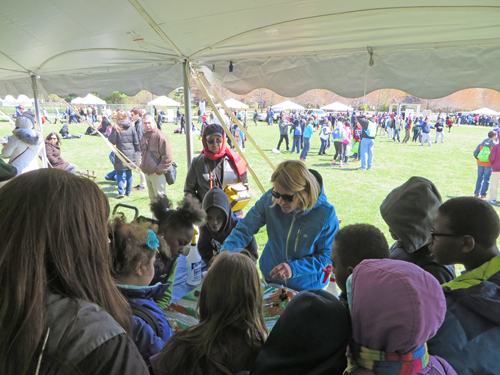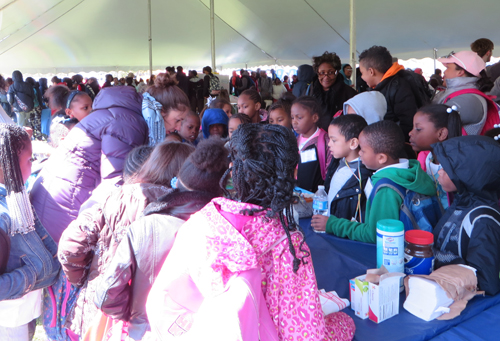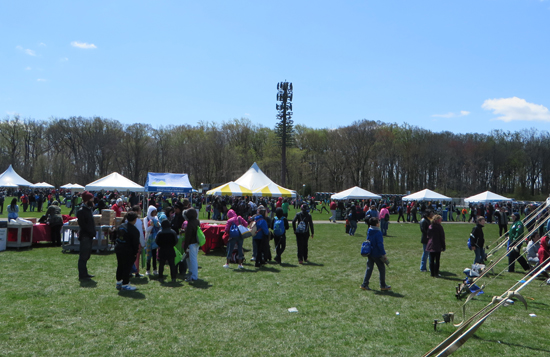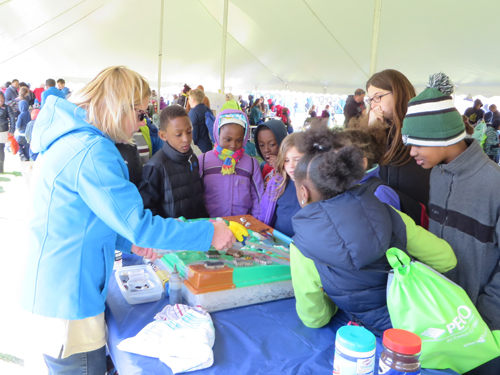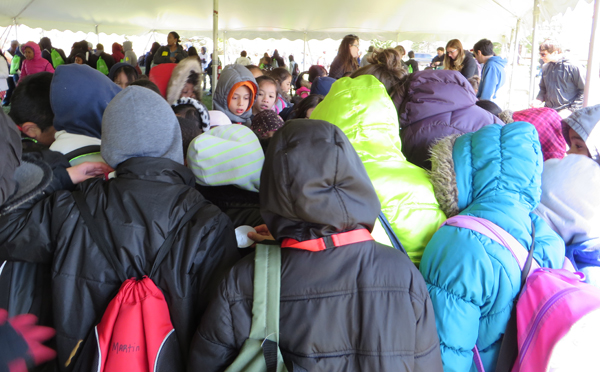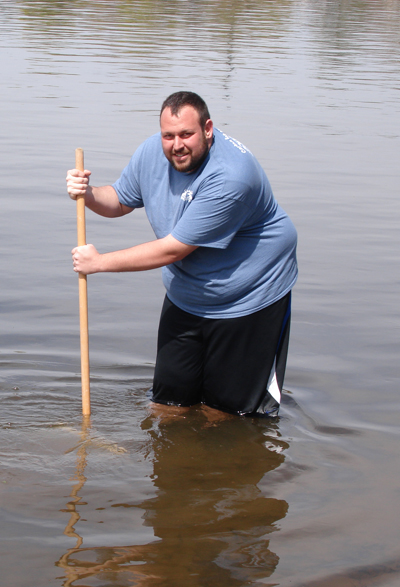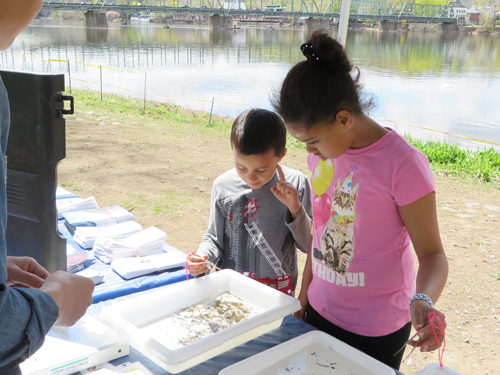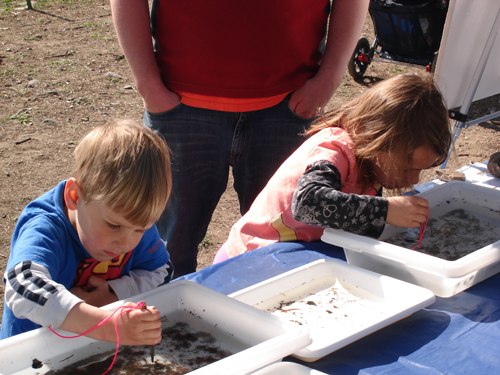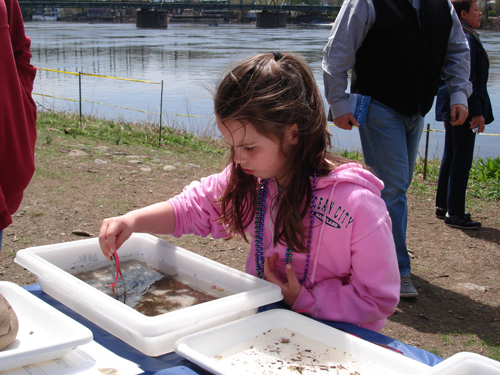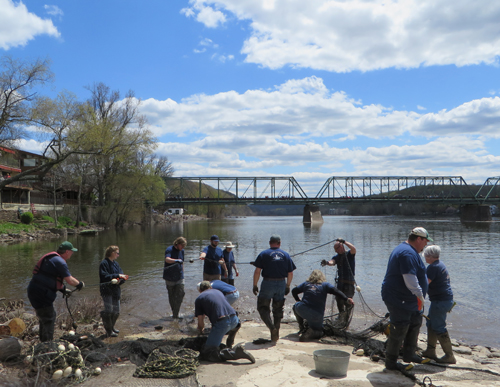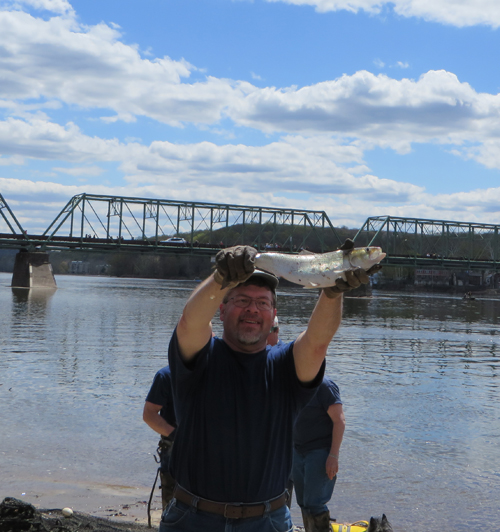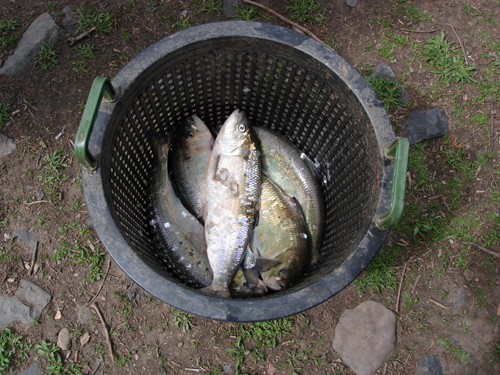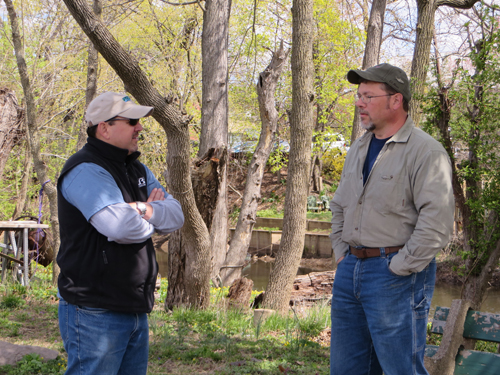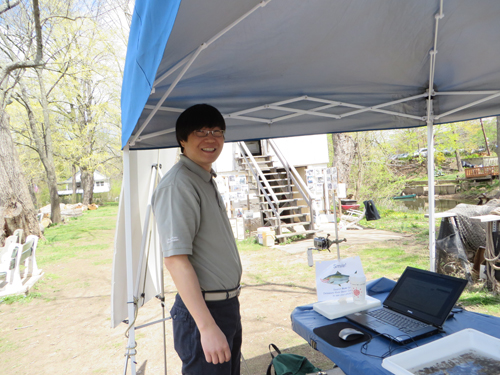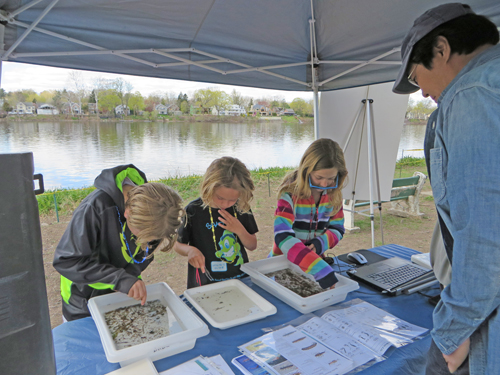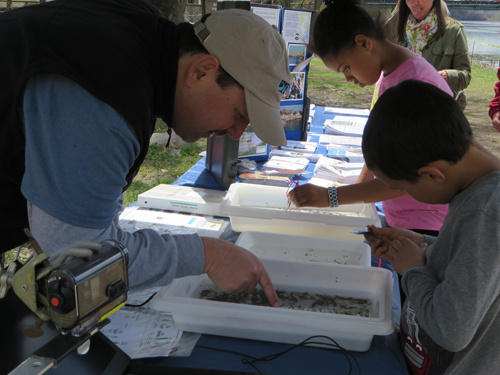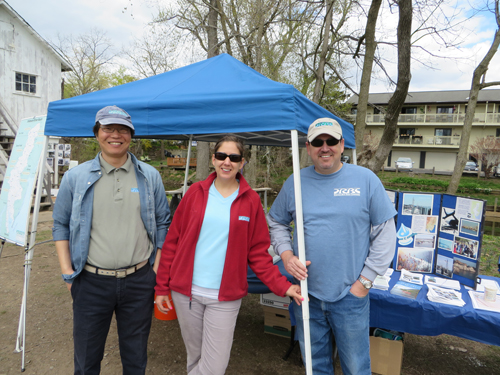Delaware • New Jersey • Pennsylvania
New York • United States of America
On Friday, April 24, 2015, EarthFest was held on the Ambler Campus of Temple University. Hosted by the Temple University Center for Sustainable Communities, the mission of EarthFest is to promote environmental awareness using sustainable concepts, methods, and practices to protect and preserve our environment. To learn more about EarthFest, please click here.
Geared for kids of all ages, this free event attracted nearly 6,000 students and featured nearly 80 different exhibits that provided attendees with hands-on learning activities. Over the years, DRBC has been a frequent EarthFest exhibitor and was proud to again participate this year, using its Enviroscape model to teach about different sources of water pollution and what we all can do to help keep our waterways clean.
View more photos from the 2015 Temple EarthFest on DRBC's Flickr page.
The 34th Lambertville Shad Festival took place on Saturday, April 25 and Sunday, April 26, 2015 in Lambertville, N.J. This annual festival celebrates the region's arts community, the Delaware River, and of course, the annual return of the American shad!
The Delaware River is an important waterway for American shad, and their presence is indicative of the water quality improvements that have occurred over time. For decades during the 1900s, pollution robbed the lower Delaware River of the oxygen needed for shad and other fish to breathe. The number of American shad in the Delaware increased dramatically by the late 1980s and early 1990s due in large part to pollution control programs conducted by the Delaware River Basin Commission (DRBC) and other environmental agencies. Learn more about American shad.
The Lewis Fishery, the last commercial shad fishery on the Delaware River, was on hand to demonstrate how to seine (catch with nets) for American shad from Lewis Island. Click here to see 2015 Delaware River shad fishing reports from N.J., including updates from the Lewis Fishery.
DRBC staff exhibited on Lewis Island on both days of the Shad Festival. Staff talked with festival attendees about the Delaware River and DRBC programs and initiatives. They also collected macroinvertebrates (aquatic bugs) from the Delaware River and discussed their connection to the river's water quality. The type and amount of aquatic insects found in a waterway can help indicate its water quality. Some bugs, for example mayfly larvae, are much more sensitive to pollution than others; finding them in numbers - which we did on both days of ShadFest - was a positive indicator of the health of the Delaware River off of Lewis Island.
We thank Steve Meserve and the Lewis Fishery Crew for allowing us to again display on Lewis Island with them!
View more photos from the 2015 Shad Festival on DRBC's Flickr page.
Copyright © Delaware River Basin Commission,
P.O. Box 7360, West Trenton, NJ 08628-0360
Phone (609)883-9500; Fax (609)883-9522
Thanks to NJ for hosting the DRBC website



